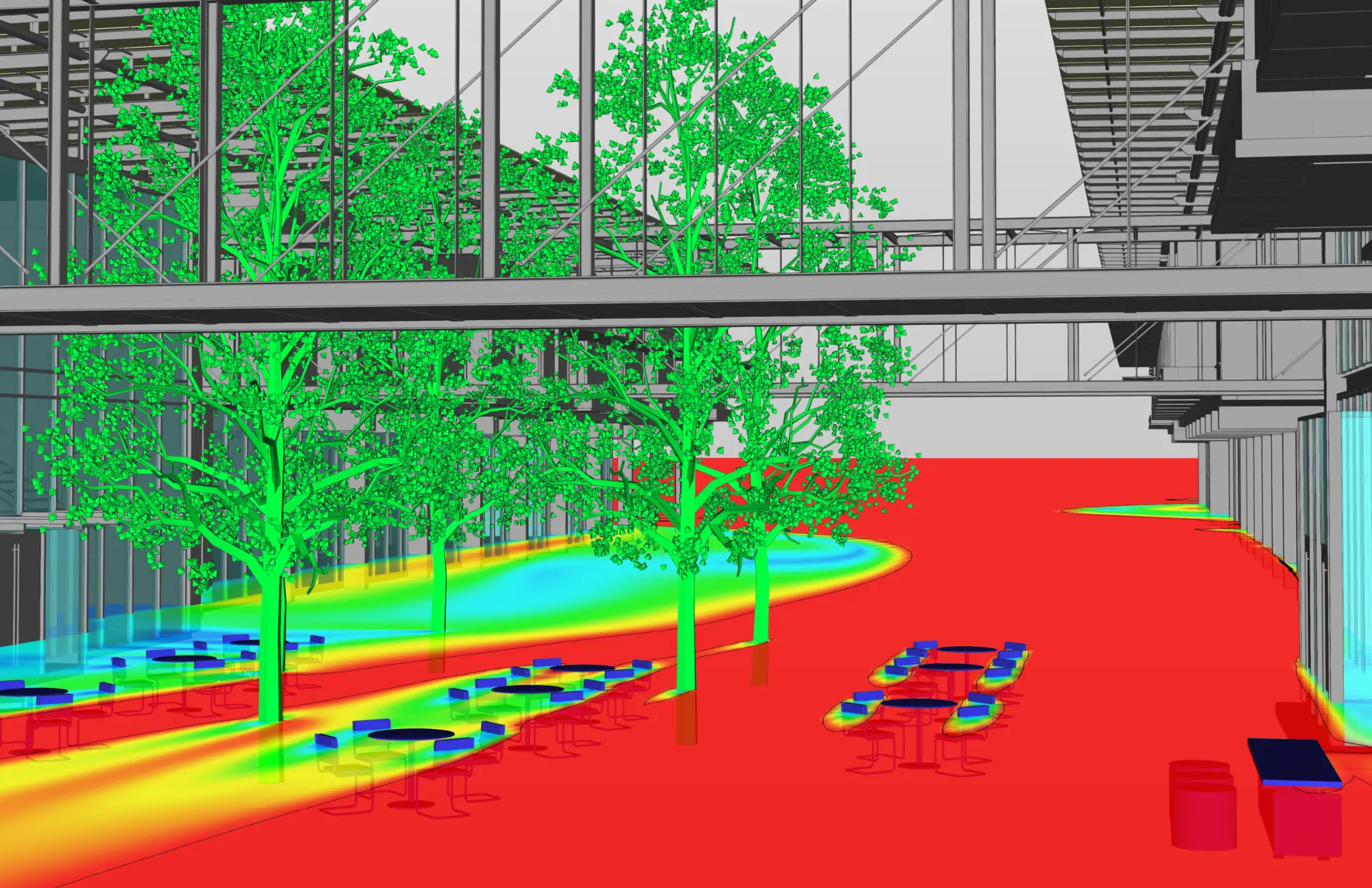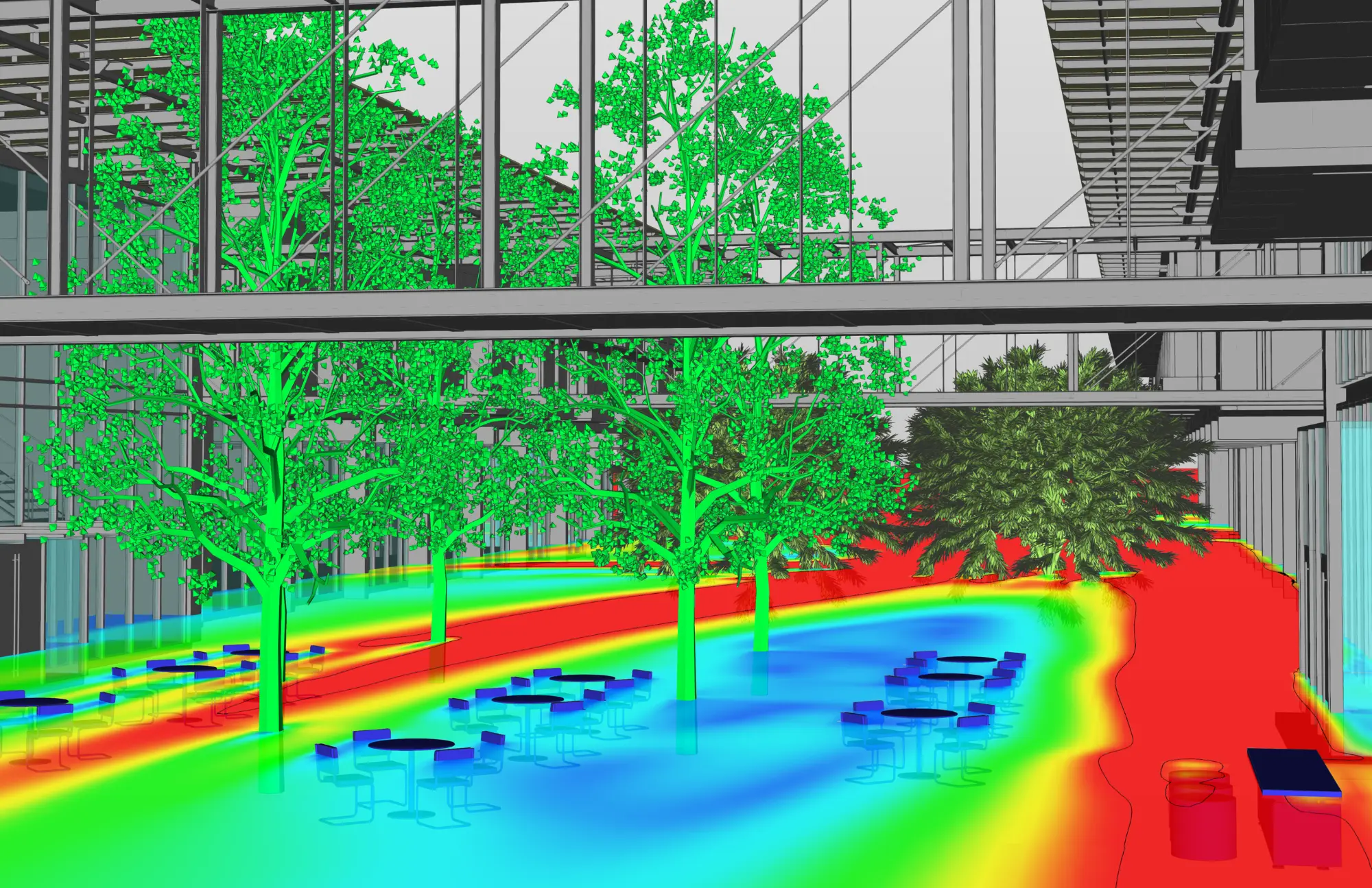Case study: upfront simulation for early-stage guidance
- Paolo Casula

- Jun 12, 2024
- 1 min read
Updated: Mar 14

Early-stage CFD simulations in architecture development offer a distinct advantage by enabling architects to explore, optimize and validate design directions efficiently, saving time and resources while ensuring performance and sustainability goals are met.
Within landscape architecture, greenery and trees are increasingly important, as they not only elevate aesthetic appeal, but also promote environmental sustainability and play a key role in mitigating urban heat island effects.
In this case study, we investigated the impact of trees on the perceived comfort of a relaxation area, furnished with garden chairs and tables, subject to a wind intensity of 10 m/s.
The two images show the wind speed at a 70 cm height above the ground, highlighting red zones where wind speeds exceeding 3 m/s. Typically, this speed threshold is the upper limit to ensure comfort.
Thanks to our proprietary and unique Non-Conformal Grid technique, we used true models of trees and extremely complex IFC building models.
Each setup, included the grid generation of about 5M cells, took less than 20 minutes. The simulations took a few hours each.
Courtesy of Buro Milan





Comments